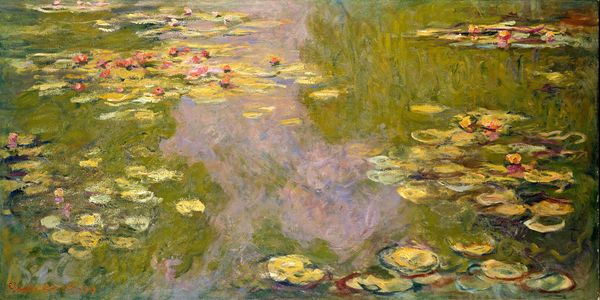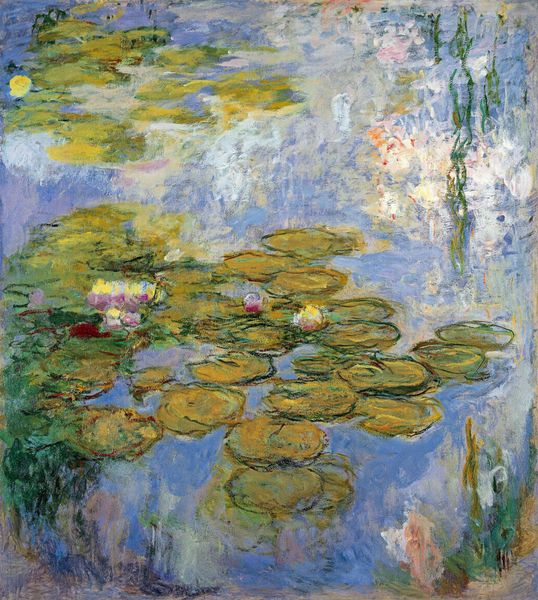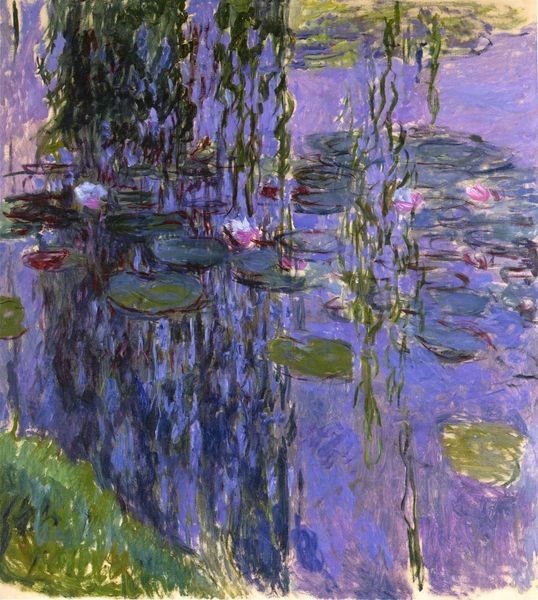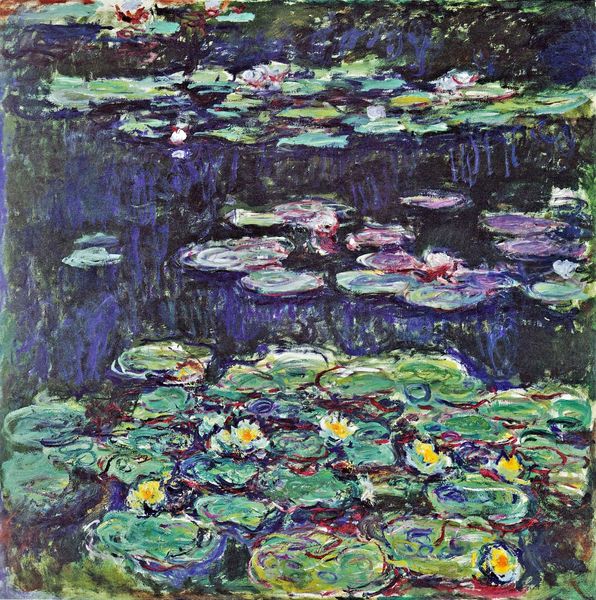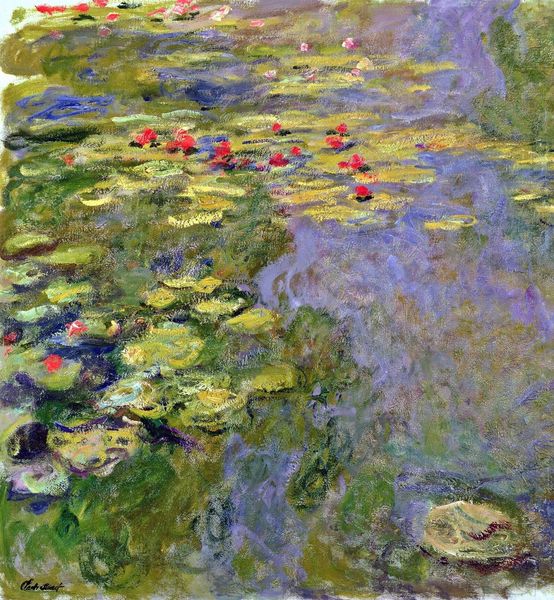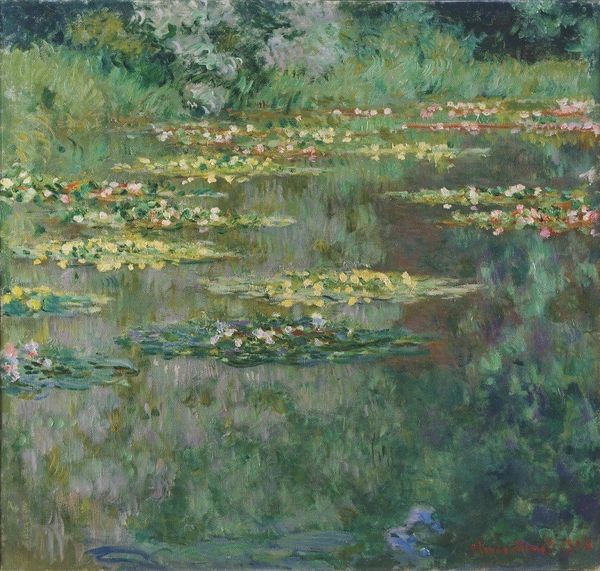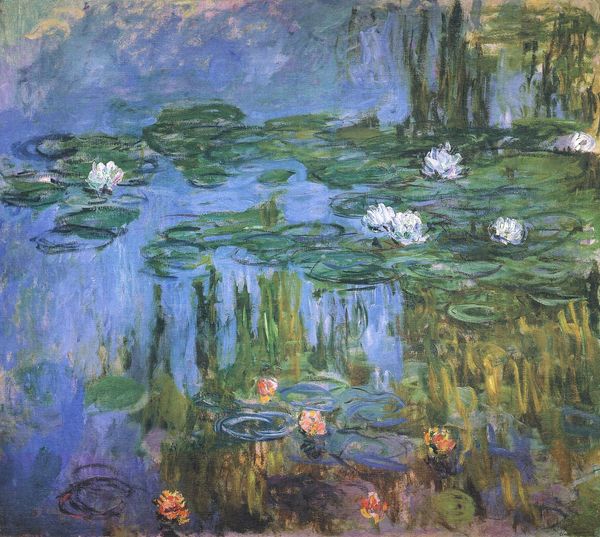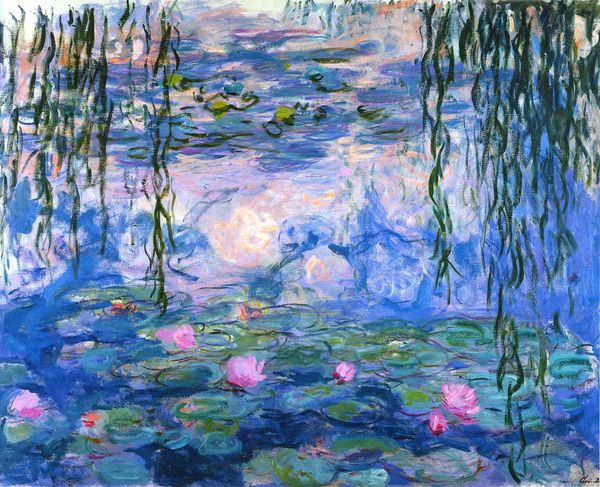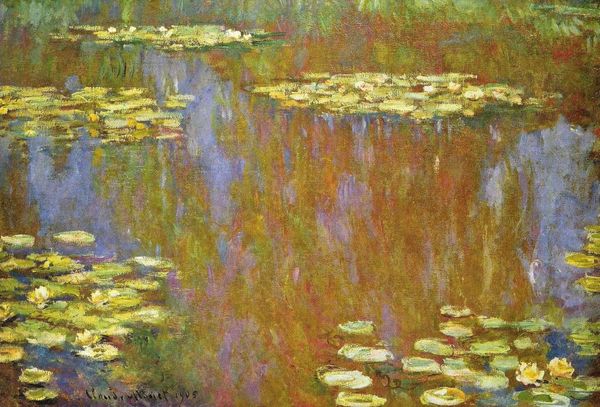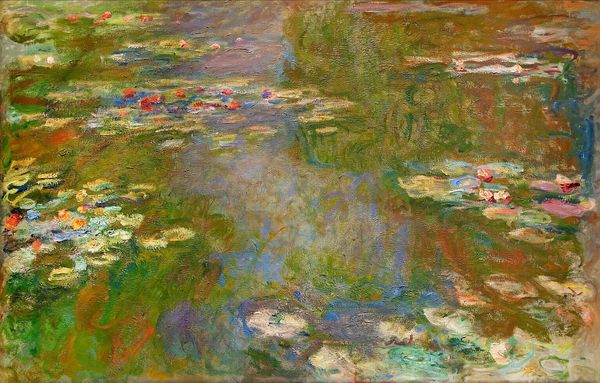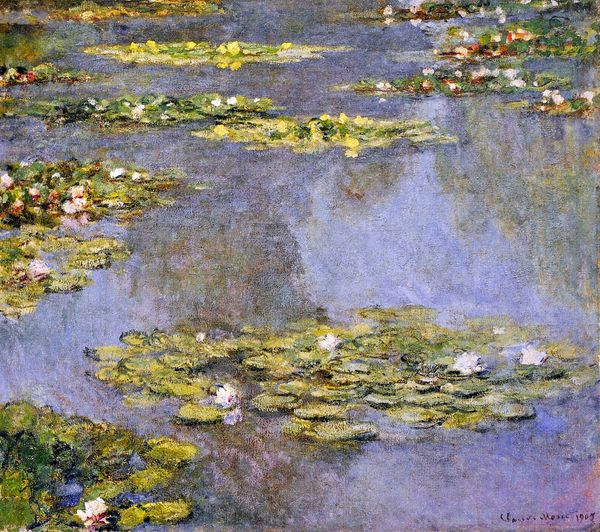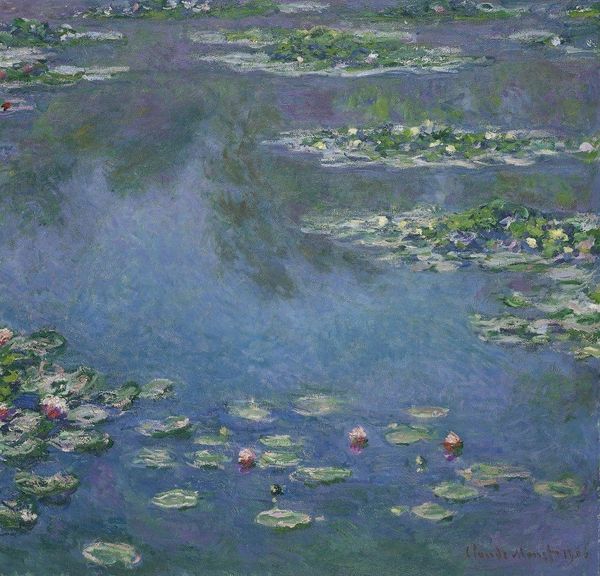
Copyright: Public domain
Editor: Here we have Claude Monet's "Water Lilies," created in 1916, an oil painting in that quintessential Impressionist style. What strikes me is how the colours almost blend together; it feels more like a dreamscape than a real place. What do you see in this piece? Curator: It's interesting that you use the word 'dreamscape.' To me, Monet is attempting to capture a fleeting moment. What if reality isn’t so fixed, but more a dance of light and colour, constantly shifting and changing? Monet lets us peer into this ephemeral reality. Does the loose brushwork evoke a sense of tranquility for you? Editor: Yes, it definitely feels calm, almost meditative. I know it's plein-air painting, so he's painting outdoors, but it also feels very internal, as if it is coming from his memory of the landscape as much as from observation. Curator: Absolutely! By 1916, Monet was increasingly absorbed by his own garden at Giverny. These paintings are like visual diaries; meditations on light, water, and reflection as his eyesight began to fail. Think of it less as plein-air in the traditional sense and more like a dialogue between memory, feeling, and the present moment. Do you notice how he uses the reflection? Editor: Yes, it almost makes it hard to tell what’s above the water and what’s below. It collapses space! Curator: Precisely. He blurs the lines, challenging our perception and creating an immersive, almost spiritual experience. I sometimes think of them as portals rather than paintings. What a thought, right? Editor: It really is! I had thought of them more as studies of light, but I see how much more personal and internal they are now. Thanks! Curator: My pleasure! Every artwork reveals new layers each time, doesn't it?
Comments
No comments
Be the first to comment and join the conversation on the ultimate creative platform.
